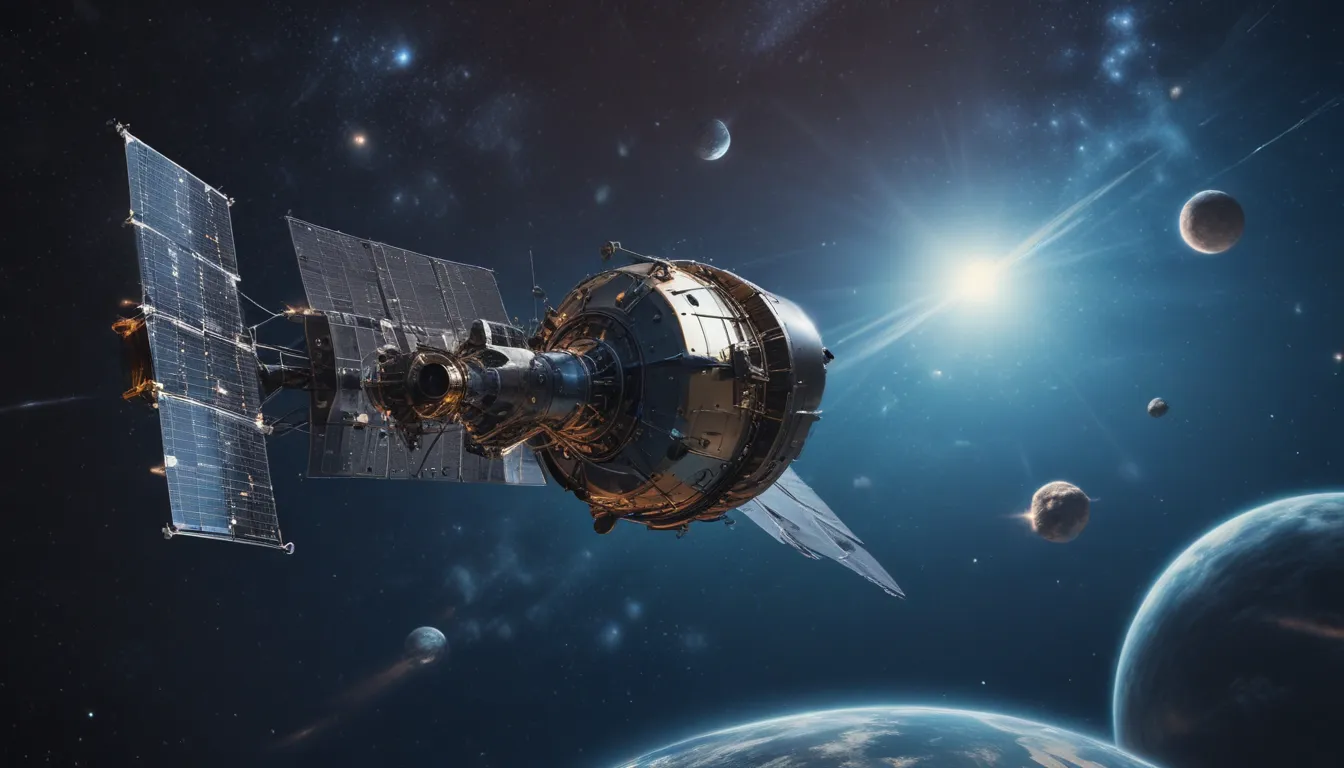The pictures we use in our articles might not show exactly what the words say. We choose these pictures to make you interested in reading more. The pictures work together with the words but don’t take their place. The words still tell you the important facts.
Satellites are not just objects orbiting our planet; they are incredible technological marvels that have transformed the way we live, work, and explore the universe. From weather forecasting to global communication, satellites play a crucial role in our daily lives, providing us with invaluable services and benefits. In this article, we will delve into 15 fascinating facts about satellites that will expand your knowledge and appreciation of these orbiting wonders. Get ready to be amazed by the unbelievable capabilities and achievements of satellites!
The Marvels of Satellites
- Satellites orbit the Earth for decades: These incredible devices have the ability to orbit our planet for several decades, serving various purposes that benefit us in numerous ways.
- Weather forecasting: Satellites play a vital role in weather forecasting by helping meteorologists track weather patterns, monitor storms, and issue timely warnings to the public.
- GPS navigation: Thanks to satellites, we can easily navigate through unknown territories using GPS systems that send signals to our devices, allowing us to accurately determine our location on Earth.
- Global communication: Satellites are responsible for transmitting television signals, phone calls, and internet data across the globe, facilitating global communication on a massive scale.
- Environment monitoring: Scientists use satellites to gather information about the Earth's atmosphere, oceans, and land, enabling them to monitor climate change, deforestation, and pollution levels to take necessary action.
- Disaster management: During natural disasters, satellites provide crucial support by assessing damage, identifying areas in need of assistance, and coordinating rescue efforts.
The Surprising World of Satellites
- Size Variability: Not all satellites are massive structures; some can be as small as a shoebox, known as CubeSats, used for research and educational purposes.
- Imaging capabilities: Satellites capture stunning images of Earth from space with advanced imaging technology, allowing scientists to study changes in the Earth's surface over time.
- Outer space exploration: Satellites assist in studying distant galaxies, stars, and celestial bodies, providing valuable insights into the mysteries of the universe.
- Lunar exploration: Satellites have been instrumental in lunar exploration, orbiting the moon, collecting data, and supporting manned and unmanned missions.
- Space debris threat: Space debris poses a threat to satellites, including old satellites and collision fragments, prompting measures to mitigate risks and ensure mission longevity.
- Orbital repositioning: Satellites can be repositioned in orbit to optimize functionality or avoid collisions with other satellites or space debris.
Satellites: Transforming Our World
- Media broadcasting revolution: Communication satellites have revolutionized media broadcasting, enabling worldwide transmission of television broadcasts, radio shows, and live events in real-time.
- Precision agriculture: Satellite technology benefits agricultural activities by monitoring crop health, optimizing irrigation, and improving productivity through satellite imagery analysis.
- Long-distance education: Satellites play a significant role in providing educational opportunities to remote areas through distance learning programs, connecting students with teachers globally.
In conclusion, satellites are integral to our daily lives, providing us with a wealth of information and improving communication, navigation, weather forecasting, and scientific research. As technological advancements continue, we can expect even more impressive achievements in satellite technology, with innovations like constellations of tiny satellites providing global internet coverage and advanced space telescopes unraveling the mysteries of the universe. Satellites have opened up endless possibilities for exploration and connectivity, shaping the way we interact with our world and beyond.
Frequently Asked Questions
- How do satellites stay in orbit?
-
Satellites stay in orbit by balancing the force of gravity with their forward motion, maintaining a specific velocity called orbital velocity.
-
How far are satellites from Earth?
-
The distance between satellites and Earth varies depending on their purpose, with GPS satellites orbiting at around 20,000 kilometers above the Earth's surface.
-
Can satellites be reused?
-
Some satellites are designed for reuse, while others are left in orbit or sent into a controlled reentry to burn up in the Earth's atmosphere.
-
How long do satellites last?
-
The lifespan of a satellite depends on factors such as design, fuel capacity, and the space environment, with communication satellites lasting around 15 years on average.
-
How many satellites are currently in space?
- As of 2021, thousands of satellites are in space, used for communication, weather monitoring, navigation, and research, with the number expected to grow in the future.
Satellites continue to amaze us with their incredible capabilities and potential for exploration. Whether you're a space enthusiast, a tech aficionado, or someone eager to learn something new, the world of satellites offers a fascinating journey of discovery. Explore the secrets of satellite technology, dive into remote sensing and imagery, and embrace the wonder of these celestial wonders that have reshaped our world. Get ready to have your mind blown by the amazing world of satellites!






